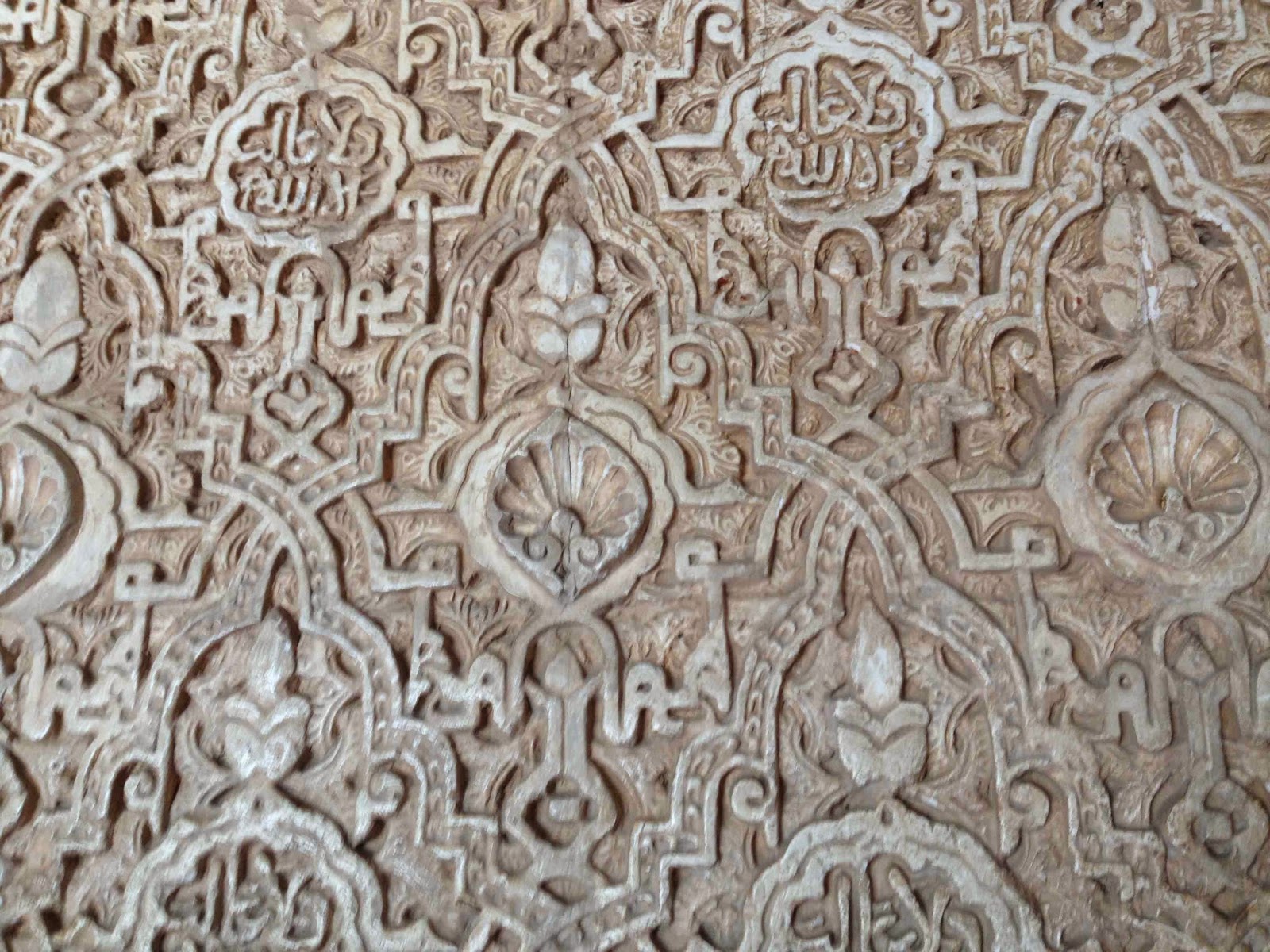What's astonishing if you're seeing it for the first time, is the juxtaposition of palm trees against a backdrop of snow-covered mountains, which alone makes a trip to the Alhambra at this time of year worth it. But there's another bonus: you mostly have it to yourself. Not entirely, but as close as you can probably get. So, tip 1: dress up warm, pick a sunny day and go in the middle of winter.
 Among the delights of this 13th-century fortress-cum-palace-cum-extensive gardens is how you can wander about. I couldn't help thinking that, in another 10 or 15 years, they'll have laid down plank-covered walkways and you won't be able to just tramp over the ancient tiles. But, for now, what a delight to walk in the footsteps of all those who went before.
Among the delights of this 13th-century fortress-cum-palace-cum-extensive gardens is how you can wander about. I couldn't help thinking that, in another 10 or 15 years, they'll have laid down plank-covered walkways and you won't be able to just tramp over the ancient tiles. But, for now, what a delight to walk in the footsteps of all those who went before. |
| Granada seen from the Alhambra |

We booked a 12.30 entry and arrived at the Alhambra at about 11am. I think we could have got there a half hour earlier or booked a slightly later entry, as the way it's laid out, you can see almost everything else before you go in to the Palace and, afterwards, head up to the Generalife gardens and building, which then feed you back to the car park. We tried to see most of the place, including some of the woods down below (though we skipped the art museum) and were in the grounds a total of about 6 hours.
 One other thing to know about that ticket for the Palace: hang on to it! It will get you into Alcazaba, the old fortress, and the building in the Generalife gardens.
One other thing to know about that ticket for the Palace: hang on to it! It will get you into Alcazaba, the old fortress, and the building in the Generalife gardens. |
| Alcazaba Fortress |
 |
| Lion fountain |
 We loved the old Moorish filagree windows and plasterwork, but best of all was the lion fountain. There was something so pure and simple about all that white marble against the intricate pillars and ceilings all around that was soothing and simply beautiful.
We loved the old Moorish filagree windows and plasterwork, but best of all was the lion fountain. There was something so pure and simple about all that white marble against the intricate pillars and ceilings all around that was soothing and simply beautiful.And the Generalife gardens, which contained various elements considered essential for a pleasing outdoor space – that is, water, spaces divided into equal parts and long walkways – provide plenty of picnic-spot possibilities, or just nice spaces to walk through and enjoy the views.
One final tip: driving in Spain is very straightforward, the roads aren't crowded, signs are clear – in fact, the ones for the Alhambra are in red, making it very easy to find from the highway (motorway, autobahn, whatever you call it!) – and our car rental, from Autos Tivoli in Nerja, cost us €45 for the day, plus about €10 in gas (petrol), so between two, it felt like the most comfortable way to travel, as we could suit ourselves. However, there are buses as well.











